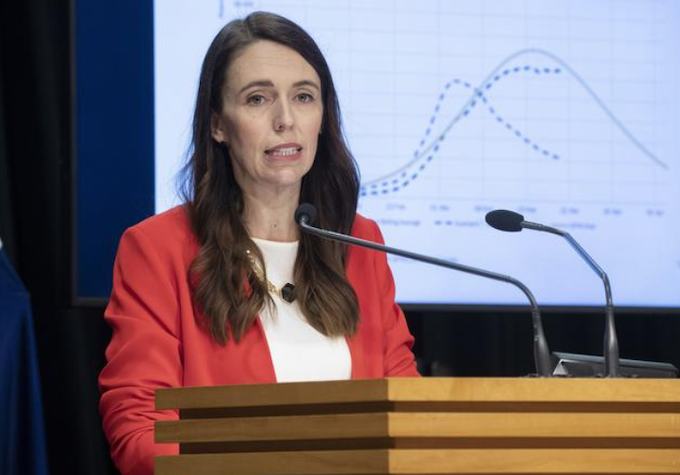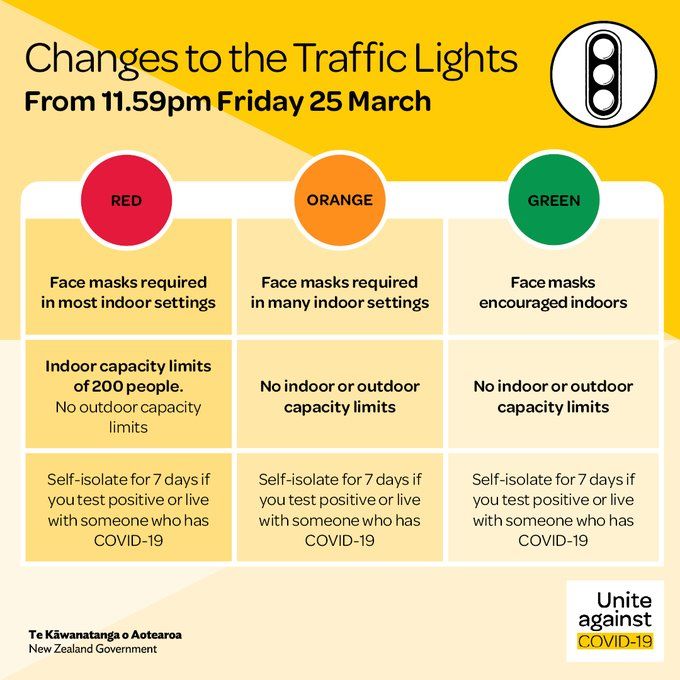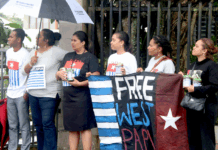
New Zealand Prime Minister Jacinda Ardern has revealed cabinet’s decisions about when and how covid-19 restrictions will be eased.
She said the traffic light system would remain to help manage any future outbreaks.
However, Ardern said things had changed since the system was introduced:
- New Zealand is now dealing with the omicron variant, rather than delta;
- there is more more data available now and the government is better able to identify which environments are high risk; and
- there are high rates of vaccination coverage.
The changes came as the Ministry of Health reported today that the national death toll had risen above 200 — to a record 210 — with 11 further deaths, and 20,087 new community cases of covid-19.
- READ MORE: Covid-19 update: Total death toll rises above 200, with 20,087 new community cases reported today
- Other NZ covid outbreak reports
With that in mind, Ardern said she was announcing that all outdoor gathering limits would be removed from the traffic light system.
She said indoor gathering limits would increase from 100 to 200 under the red light setting.
Ardern said data showed hospitality had a relatively low secondary attack rate of 6.7 percent, which was backed up by other research.
She said it was the view of public health officials that hospitality gathering limits could be increased in the red setting from 100 to 200 without having a significant impact on the health system, particularly when retaining the seated and separated rules.
She also announced that vaccine passes would no longer be required from 11.59pm on April 4.
Watch the announcement
Video: RNZ New
Businesses and events would still be able to use them, if they chose to do so, but they would no longer be mandated, she said.
Ardern said masks were vital, and while people did not like them — for good reason — a study from the British Medical Journal late last year showed mask wearing reduced new cases by 53 percent.
In the orange setting, outdoor events will also be limitless. Close contact is higher risk for indoor events, however, so organisers of events over 500 people are encouraged to either add extra capacity or provide seating.
Green will not have restrictions but there will be guidance, and will not change.
“These changes are based on the best available evidence we have right now in real time. We believe they will make the Covid Protection Framework easier to maintain while also still being very effective,” Ardern said.
She said the changes could be made almost immediately and would come into effect at 11.59pm on March 25.
The next review of the traffic light settings and which setting the country sits in will happen on April 4.
Mandates needed for delta
On mandates and vaccine passes, Ardern said she was initially not in favour of their use but after months of delta it became clear that mandates were needed to achieve vaccination levels required for safe reopening, and passes had a role to play too.
She said these were undoubtedly one of the reasons the country reached 95 percent of the eligible population vaccinated, and achieved the near elimination of delta over summer, but omicron had changed things.
Almost all of New Zealand’s more than 500,000 cases of covid-19 had been in the omicron wave, she said. Many cases do not show symptoms and testing did not catch every case, so modellers expected total cases now could be as high as 1.7 million.
For the unvaccinated, the illness could be severe, she said.
Ardern said these people would have built some immunity from the illness itself, and as New Zealand had come down off the peak the need for passes changed.
The isolation period for household contacts remained at seven days, Ardern said.
On QR codes, she said there was no plan for New Zealand to contact trace more widely with the exception of high-risk environments like aged care facilities or residential facilities for the vulnerable.
QR codes use relaxed
From this weekend people would no longer be required to scan everywhere they went, and businesses were no longer required to provide the means to do so.
Ardern said businesses should stand ready to stand up QR codes again and people should not yet delete the app from their phone, in case of a new variant that evaded vaccines or was more deadly, in which case contact tracing would provide again a more critical role.
“Scanning has been a really important part of what we’ve achieved, so thank you for everyone for playing your part,” she said.
Finally, cabinet has also reviewed the role of vaccine mandates. As rates increased, they sought advice from Professor Sir David Skegg, who said the case for or against was now more finely balanced.
Skegg said: “Because of our relatively high vaccination coverage and increasing natural immunity as well as the apparent lowering of vaccine effectiveness of the omicron variant, while vaccination remains critically important in protecting New Zealanders from covid-19 we believe that several of the vaccine mandates could be dropped once the omicron peak has passed.”
The government will no longer require mandates for education, police and defence workforces and businesses operating vaccine passes from 11.59pm on April 4. They will continue to be used in health, aged care, corrections staff and border and MIQ workers.
Ardern said the government had also asked whether the mandates in the health sector could be narrowed, and expected to provide more updates on advice to the private sector on their use more broadly.
However, she asked people to still get vaccinated and boosted, saying it would continue to be central to the stability and strength of New Zealand’s recovery.
Looking back
Ardern said that after two long years of living in a pandemic it was easy to lose sight of how far New Zealand had come.
“This exact day two years ago, Director-General of Health Ashley Bloomfield announced from over at the Ministry of Health that we had 36 new cases of covid-19. Half at that time were from overseas travel, with the exception of the Queenstown World Hereford Cattle conference … we could contact trace 50 new cases a day back then. We hadn’t locked down yet, but the early signs were there.”
She said two new community cases were announced on 23 March 2020, one in Wairarapa with no link to the border.
Within days New Zealand was in a nationwide lockdown, a decision Ardern said was not a hard one.
“We had no other defence, no other way to protect each other. There was no vaccine, no antiviral medicines, there was very little data to tell us which public health restrictions worked and which did not, so we built our own defences and we hunkered down.”
The transition had not been easy but it had worked, she said. New Zealand successfully eliminated the first wave and recorded the lowest number of deaths in the OECD for two years in a row.
She said the response was also the best economic response, but while New Zealand had been successful “it was also bloody hard … everyone has had to give up something to make this work and some more than others”.
She said she imagined every family would have had a difficult conversation about vaccines, mandates or passes but among the different opinions there was also fatigue.
Ardern said New Zealand was now able to keep moving forward safely, but it had to be kept in mind that covid was here to stay.
This article is republished under a community partnership agreement with RNZ.













































